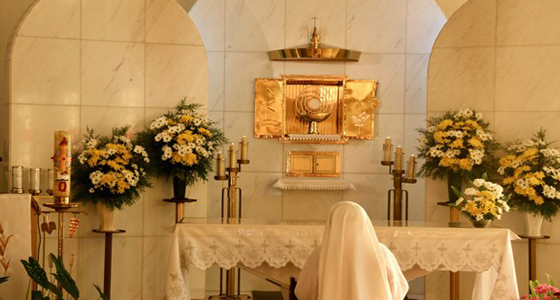Advent Apologetics: Does God Still Perform Miracles in the Church Today?
There have been various kinds of miracles that make up the patrimony of the Catholic Church. One category of such miracles is eucharistic miracles. Catholics believe every time a priest prays the words of consecration over the bread and wine—“this is my body…this is my blood”—the substance of bread and wine (what it is) changes into Jesus’ body, blood, soul, and divinity while the accidents of bread and wine (how it appears) remain. The remaining presence of the bread and wine’s accidental properties is a miracle in its own right. But this is not what is normally called a eucharistic miracle.
A eucharistic miracle occurs when the accidents of bread and wine change into real human flesh and real human blood. There are numerous documented instances of such an occurrence in the history of the Church, and we’ll look at some of them in greater depth later. A eucharistic miracle can also involve the unusual preservation of the accidental properties of bread and wine over long periods of time.
Saints’ incorruptible bodies are another example of a miracle type we find in Catholic history. Such a miracle occurs when a saint’s body, or a part of it, is preserved in a way that defies the normal process of decomposition. Unlike mummies, which have dry and hardened skin and bones, some of the saints’ uncorrupted bodies retain soft skin and pliable limbs even centuries after their death. In another answer we look at some examples of this type of miracle, too.
Many of these incorruptibles have been found to give off sweet odors. Others, like St. Francis Xavier’s body, have produced blood that defies any scientific explanation. Skeptics try to reduce the incorruptibles to the status of mummies, but the evidence overwhelmingly points beyond the natural.
Finally, in Catholic history there are scores of documented healing miracles. For example, there are the officially recognized miracles associated with the bathing waters of Lourdes, France (sixty-nine in total). There are also the healing miracles associated with canonized saints. A fairly recent example is the healing of Floribeth Moral Diaz of Costa Rica through the intercession of Pope St. John Paul II. With only a short time to live due to an inoperable brain aneurysm, she requested John Paul II’s intercession and was healed. This provided the second miracle needed to solidify his path to sainthood.
Historical miracles in the Catholic Church serve several purposes. First, they lend credibility to the claim that the Catholic Church is the original church founded by Jesus.
Second, these miracles move individuals to faith in a way that goes beyond internal experiences and private inspiration. Not everyone has powerful conversion experiences like St. Paul, who, after seeing the risen Jesus, converted to Christianity after several years of persecuting Christians. But by working miracles in history, God continues to give people reason to believe.
Finally, miracles point to the end of time when all of creation will be renewed. The healing miracles and incorruptibles focus our attention on the restoration of the body in the bodily resurrection, about which St. Paul writes, “What is sown is perishable, what is raised is imperishable” (1 Cor. 15:42). Eucharistic miracles remind us of God’s sovereignty over physical reality and how he will transform the material world in the new heaven and new earth (CCC 1043-1047; Rev. 21:1).
Jesus did not rob us of the privilege to experience the wonder of his works. He continues to wow us with miracles in the Catholic Church in order that we may believe him and his Father who sent him.From 20 Answers: Miracles
Recent Posts
-
If We Just Love Jesus, Does It Really Matter Which Church We Go To?
When I was considering joining the Catholic Church, I sat down with some of my non-Catholic friends …Dec 12th 2025 -
How Can I Prepare Myself to Receive Holy Communion at Mass More Fruitfully?
Preparation for the celebration of the holy Mass and reception of Holy Communion is an essential el …Dec 8th 2025 -
Why Does the Church Celebrate "Seasons"?
Liturgical seasons are days and weeks set aside on the Church calendar for ongoing celebration of e …Dec 1st 2025










